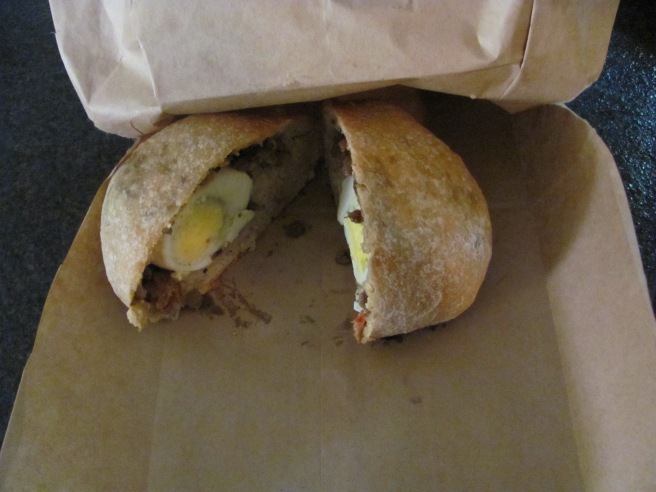Happy Thursday, folks!
I’ve been doing Camp NaNo this month, and it’s helped me get a whole lot of writing done. This is, in fact, the first time that I’ve ever done anything with NaNo, and I really like it. It’s nice to see that word count inch upward.
So, because I’m in a flurry of writing, I decided that I’d focus on my novel this week. It’s called The Orchardman as of right now. Yeah, I’ll probably come up with a better title later, but that works at this point.
This is a fantasy novel set in the fictional land of Rothungd, and specifically in a place called Moth Muninder, which is governed by a wealthy landowner known as the Orchardman. My protagonist is trying to figure out if the current orchardman killed the former orchardman (who happens to be the protagonist’s father). At the same time, Rothungd is about to be overrun by a vicious horde of foreigners, and Moth Muninder is being beset by magic-wielding thieves.
So, yes, it’s got lots of stuff, fun subplots, tons of characters, dialogue (my favorite), and is absolutely dripping with conflict.
Some of the characters you’ll meet in this novel are:
Mrinin – the prodigal son who returns to Moth Muninder only to find his father dead and his hefty uncle in charge
Vog – Mrinin’s almost always loyal friend
Captain Umliar – a leader in the invading force who must deal with an entire army plus a madwoman
Princess Brosiga – the madwoman
Firing – Mrinin’s uncle, a fat and sort-of jolly villain who really doesn’t want to give up his position as orchardman
Mraf – Firing’s cook, a young woman with a dark past and incredible skill in the kitchen
Thergil – Mraf’s beautiful younger sister, a bit snarky and completely fed up with Mraf’s angst
Ongrof – the headman of Moth Muninder, he’s a kind man who’s in charge of everything around the orchards, and he seems to keep Firing under control
Gungin – a reformed thief, he’s reckless and crazy, but he really just wants a friend
Gunting – a fisherman who loses everything but his dignity in the invasion
And now, for some snippets:
“Let’s go to Garthum,” said Mrinin.
“What?” said Vog. “Garthum? Are you gone all lunnish in the head Mrinin? There’s no one in Garthum who would take us in.”
“You don’t know that,” said Mrinin. “Besides, I think that after three years Father might be ready to forgive me and take me back in.”
“He said he didn’t want to see you again,” said Vog.
“He’d take back a repentant son,” said Mrinin. “I’m his only son, the rightful heir to his hides and orchards. He’d forgive me if I changed.”
Vog snorted. “Ach, you haven’t changed. You’re the same cheating, lying rascal you always were.”
“Yes, but Father doesn’t know that,” said Mrinin.
“Listen to me, my friend,” said Mrinin. He pushed Vog towards the wall of the house. “Firing has given me two days to make up my mind whether I stay or leave. If I stay, I have to bind myself to him.”
Vog’s mouth fell open, and he gulped.
“Oh, shut your mouth before you drown in this rain,” said Mrinin. “We probably shouldn’t be surprised. Firing was always a bit odd.”
“Yes, but you aren’t going to bind yourself to him, are you?” said Vog.
“I have to,” said Mrinin. “It’s the only way I can stay.”
Vog frowned. “But why do you want to stay? Father knows what you are, and besides, you know you’ve never liked it here.”“I don’t know if I liked it here or not,” said Mrinin. “I do know that I’m curious. I want to know if Firing did kill Father as the cook said. And I want to take my own hides for myself.”
Vog grabbed Mrinin by the arm. “You’re as mad as a hog in waking season! You can’t take back the hides if you’re a servant.”
“That’s what everyone thinks,” said Mrinin. “Swear allegiance to the orchardman. Promise never to harm him, always to serve him, always to look out for him. Vog, when has my word ever been worth the breath it took to say it in?”
“Maybe not,” said Mrinin. “Did you think of binding yourself servant to an orchardman?”
Gungin laughed a bitter laugh. “I was born on a free hide. I’ll not bind myself servant to anyone. Besides, you’ve always lived a safe life. What would you know?”
Mrinin stepped back. “Very little, I suppose,” he said. “Look, thief. I’m going to bind myself to Firing, the orchardman here. If you do the same, I’ll see that you’re protected.”
It was a foolish promise. After all, what had this man ever done for Mrinin? Most likely Firing wouldn’t want a thief to bind himself servant here.
Except Mrinin knew his uncle well enough know that the personal satisfaction of getting to order around someone who had been stealing chickens would outweigh any graver considerations on Firing’s part.






















